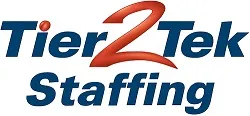In the ever-evolving world of engineering and design, finding the right talent for your CAD (Computer-Aided Design) team is crucial. As a Hiring Manager, you understand the importance of assessing technical skills accurately to make informed recruitment decisions. This article will provide you with a comprehensive guide on how to assess technical skills in CAD recruitment, ensuring you bring in the best talent to drive your projects forward.
Defining Your CAD Requirements
The first step in assessing technical skills effectively is to have a clear understanding of your CAD requirements. This involves defining the specific skills, software knowledge, and experience levels needed for the role. Consider the nature of your projects, industry standards, and the team’s dynamics when outlining your requirements.
To define your CAD requirements comprehensively, start by listing the essential technical skills and software proficiencies that candidates must possess. Be specific about the CAD software packages they should be familiar with, such as AutoCAD, SolidWorks, or CATIA. Additionally, consider the level of experience required, whether it’s entry-level, mid-level, or senior expertise. Take into account the complexity of your projects and the team’s collaborative nature. Do you need individuals who can work independently or thrive in a team-oriented environment? By clearly defining your CAD requirements, you create a roadmap for evaluating candidates effectively, ensuring that you attract individuals who align with your organization’s specific needs.
- Define specific technical skills, software knowledge, and experience levels.
- Consider project nature, industry standards, and team dynamics.
- List essential CAD software packages and proficiency levels.
- Determine the required level of experience (entry, mid, senior).
- Assess whether candidates should excel independently or in a team.
- Clear requirements facilitate effective candidate evaluation.
Screening Resumes Effectively
Once you’ve posted your job listing, you’ll likely receive a plethora of resumes. To streamline the evaluation process, establish clear criteria for resume screening. Look for keywords related to CAD software, certifications, and relevant experience. Tailor your screening process to match your CAD requirements closely.
When screening resumes, start by creating a checklist based on your defined CAD requirements. Look for keywords related to specific CAD software and technologies, such as AutoCAD, Revit, or SolidWorks. Identify any relevant certifications, such as Autodesk Certified Professional or Certified SolidWorks Associate. Assess the candidate’s educational background and previous work experience, paying close attention to roles that align with your requirements. Highlight any achievements or projects that demonstrate their technical skills in CAD. By systematically evaluating resumes against your criteria, you can shortlist candidates who meet the technical skill prerequisites, streamlining the subsequent stages of the recruitment process.
- Establish clear criteria for resume screening.
- Create a checklist based on defined CAD requirements.
- Look for keywords related to CAD software and certifications.
- Assess educational background and relevant work experience.
- Highlight achievements demonstrating CAD technical skills.
- Systematic screening shortlists qualified candidates effectively.
Utilizing CAD Skill Assessments in Recruitment

Skill assessments are a critical component in the recruitment process for CAD professionals. They offer a practical and objective way to evaluate a candidate’s technical abilities and ensure they align with the specific needs of your organization. This section will delve into how to effectively utilize CAD skill assessments in your recruitment process.
Formulating CAD Technical Interview Questions
Creating effective CAD technical interview questions is a crucial step in the recruitment process. These questions should be designed to test the candidate’s technical knowledge, problem-solving abilities, and understanding of CAD principles. Here’s a guide on how to formulate impactful CAD technical interview questions:
- Align Questions with Job Requirements: Tailor questions to match the specific CAD skills and responsibilities outlined in the job description.
- Incorporate Scenario-Based Questions: Use real-world scenarios to challenge candidates in solving practical problems or making design decisions.
- Focus on Software Proficiency: Include questions about the candidate’s experience with specific CAD software, particularly features and workflow optimization techniques.
- Evaluate Understanding of CAD Principles: Test the candidate’s knowledge of fundamental concepts like 3D modeling, drafting standards, and file management.
- Ask About Past Projects and Experience: Encourage discussions about past work where they applied their CAD skills, revealing their problem-solving approach and creativity.
- Include Industry-Specific Knowledge: If relevant, include questions related to the specific industry the role is associated with, like automotive or architecture.
Designing Tailored CAD Skill Assessments
The first step in utilizing CAD skill assessments is to design tests that are tailored to the specific requirements of the role. This involves identifying the key skills and software proficiencies needed. For instance, if you are hiring for a role that primarily uses AutoCAD, the assessment should focus on tasks that test the candidate’s ability in using this specific software. Similarly, if the role requires 3D modeling skills, the assessment should include tasks that evaluate this ability.
Types of CAD Skill Assessments
There are several types of assessments you can use:
- Software-Specific Skill Tests: Tasks focusing on proficiency in specific CAD software, like AutoCAD or SolidWorks, to evaluate the candidate’s ability to use advanced features and optimize designs.
- Practical Design Projects: Real-world design challenges to assess creativity, attention to detail, and adherence to specifications.
- Technical Knowledge Quizzes: Written tests covering theoretical CAD principles, engineering concepts, and industry standards.
- 3D Modeling and Rendering Challenges: Exercises that require creating complex 3D models and applying rendering techniques to test modeling skills and photorealistic image creation.
- Reverse Engineering Exercises: Tasks where candidates replicate a physical object or 3D scan into an accurate CAD model, assessing their understanding of complex shapes and forms.
- Drafting and Detailing Tests: Focus on the ability to create detailed 2D drawings from 3D models, testing knowledge of drafting standards and clarity in technical drawings.
- Data Management and Collaboration Scenarios: Assessments on using CAD data management tools and collaboration within a CAD environment, including version control and teamwork.
- Customized Scenario-Based Assessments: Tailor-made tests mirroring the specific projects of the role, evaluating how well a candidate’s skills align with job demands.
Conducting the Assessments

The manner in which these assessments are conducted is also important. Consider the following approaches:
- In-person Assessments: Conducting assessments in-person allows you to observe the candidate’s approach to the task, their problem-solving process, and their comfort level with the software.
- Remote Assessments: With the rise of remote work, it’s also viable to conduct CAD skill assessments online. Ensure that the online platform you use is secure and capable of effectively evaluating the candidate’s skills.
Evaluating Assessment Results
The evaluation of assessment results should be based on pre-defined criteria that align with the role’s requirements. This might include the accuracy of the final design, efficiency in completing the task, creativity, adherence to design standards, and the candidate’s ability to follow instructions.
By effectively utilizing CAD skill assessments, hiring managers can make more informed decisions in the recruitment process, ensuring that they hire candidates with the right technical competencies to meet their organizational needs.
Content reviewed and published by Tier2Tek Staffing Editorial Team .
